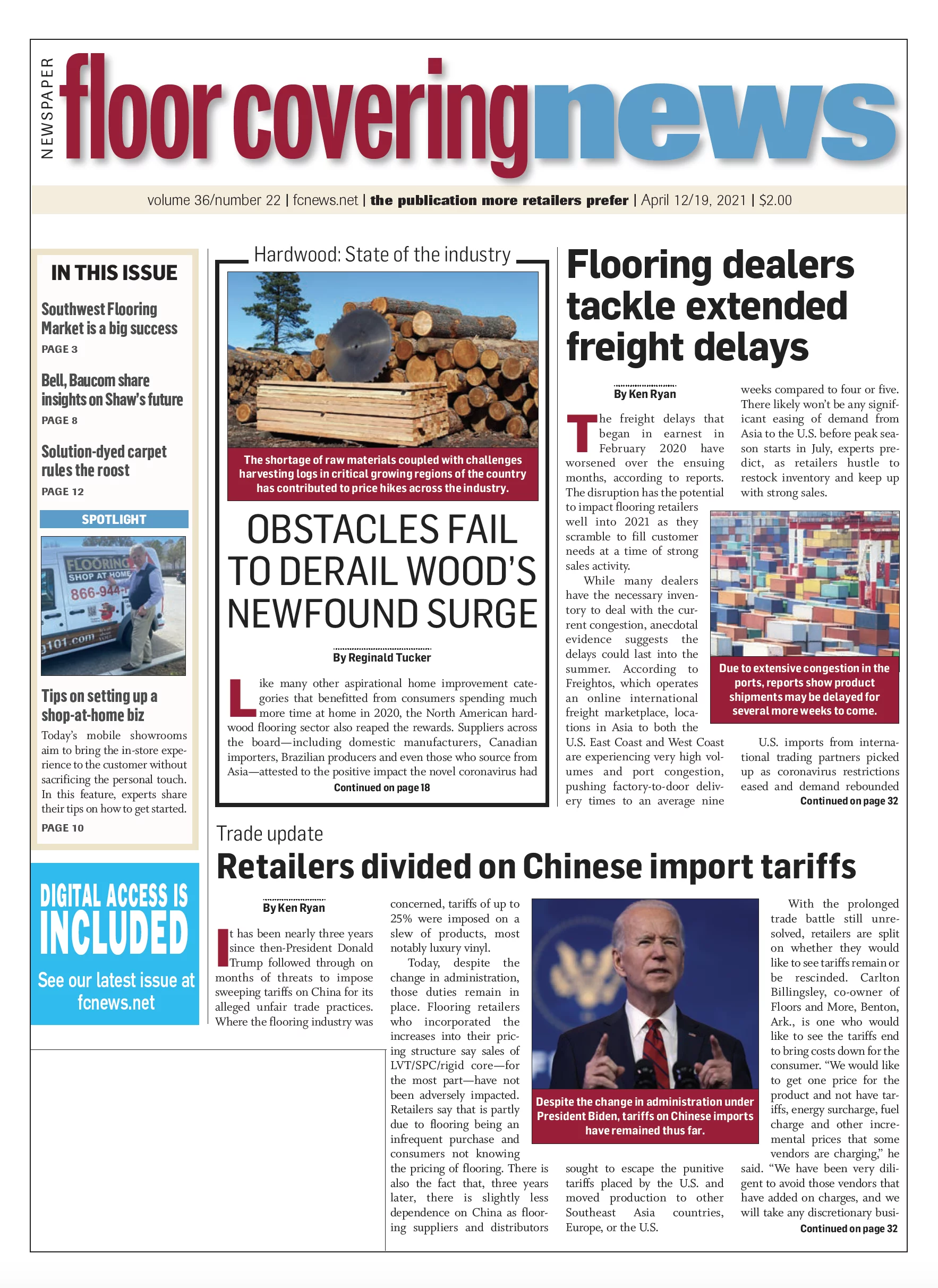 By Jason Spangler Thirty years ago, few people installed bamboo floors in their home or business. Today, bamboo is widely available and popular. So, what’s behind the surge in popularity?
By Jason Spangler Thirty years ago, few people installed bamboo floors in their home or business. Today, bamboo is widely available and popular. So, what’s behind the surge in popularity?
For one thing, if you’re drawn to the idea of using natural material such as solid wood—and who isn’t—you might find yourself dismayed by the steadily increasing cost of hardwood. Springing for good-quality bamboo flooring could save you money compared to hickory, cherry or other more expensive species of hardwood.
Recent advances in the techniques used to manufacture bamboo flooring are also behind bamboo’s growing popularity. Earlier generations of bamboo were often softer and did not last as long as solid wood. (Interestingly, bamboo is not a type of wood. It’s a dense, fast-growing grass that can be engineered to achieve some of the same benefits as wood.)
If properly cared for, good-quality bamboo can last for many years, plus some types can even be refinished. And as a grass that can be sustainably harvested every three to 10 years, bamboo is often thought of as environmentally friendly. It’s easy to maintain, termite resistant and won’t harbor allergens.
But be warned: Not all bamboo products are created equal. Cheaper, inferior-quality bamboo flooring generally won’t hold up as well and can be more susceptible to scratches or dents. Additionally, watch out for brands of bamboo flooring that contain adhesives and formaldehyde because they emit higher levels of toxic, volatile organic compounds. Do your homework to know what you’re getting.
Other considerations
Moisture can be an issue with bamboo, much like solid wood. Bamboo absorbs or releases moisture according to ambient conditions. This means the same kinds of moisture issues that sometimes affect wood floors—problems such as warping, crowning, buckling, mold and mildew—can impact bamboo floors as well. Fortunately, taking proper precautions before, during and after the installation will nearly always prevent significant moisture-related issues.
Following are some key steps to remember:
First, pay attention to the moisture content of the bamboo itself. Always allow time for bamboo flooring to acclimate to the interior environment. Use a pin or pinless moisture meter to determine if the bamboo is ready to install. Pinless meters are fast and easy to use and won’t mar your bamboo.
Second, consider your subfloor. It could be a ticking time bomb for moisture issues if you’re not careful. This is particularly true in the case of a concrete subfloor. Even though a concrete slab may look dry at the surface, that does not necessarily mean it’s ready for a finished floor installation.
Moisture in a slab typically exists in a gradient as it dries following the initial pour. Expect considerably more moisture deep down in the slab than at the surface. This “hidden” moisture could wreak havoc on either bamboo or wood flooring after it’s installed. For a reliable evaluation of concrete moisture, use an in-situ relative humidity test. This is a depth-specific test that has been scientifically shown to give an accurate indication of the moisture that your floor will “see” after installation.
At the end of the day, there’s a lot to like about bamboo. By taking the moisture-related precautions, you’ll enjoy peace of mind that your bamboo floor will last for the long haul.
Jason Spangler is sales manager for Wagner Meters. He has more than 25 years of experience in sales and sales management across a broad spectrum of industries. He may be reached at 855.350.7719.

